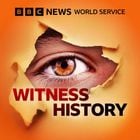In 1956, one of the world’s most beloved children’s toys went on sale for the first time, but its origins were surprising.
The modelling clay had started out as a household cleaning product. In the days when homes were heated by coal fires, it was used to clean soot and dirt from wallpaper.
But its manufacturer ran into trouble as oil and gas heating became increasingly popular. Then Kay Zufall, whose brother-in-law owned the firm, had an idea.
Her children enjoyed using the putty to make ornaments and jewellery so she suggested the company switch markets and give the clay a new name. Play-Doh was born.
According to the current brand owners, more than three billion cans have been sold in 80 countries around the world. Peg Roberts, Kay’s daughter, tells Jane Wilkinson how her mother had the idea.
Eye-witness accounts brought to life by archive. Witness History is for those fascinated by the past. We take you to the events that have shaped our world through the eyes of the people who were there.
For nine minutes every day, we take you back in time and all over the world, to examine wars, coups, scientific discoveries, cultural moments and much more.
Recent episodes explore everything from the death of Adolf Hitler, the first spacewalk and the making of the movie Jaws, to celebrity tortoise Lonesome George, the Kobe earthquake and the invention of superglue.
We look at the lives of some of the most famous leaders, artists, scientists and personalities in history, including: Eva Peron – Argentina’s Evita; President Ronald Reagan and his famous ‘tear down this wall’ speech; Thomas Keneally on why he wrote Schindler’s List; and Jacques Derrida, France’s ‘rock star’ philosopher.
You can learn all about fascinating and surprising stories, such as the civil rights swimming protest; the disastrous D-Day rehearsal; and the death of one of the world’s oldest languages.
(Photo: Play-Doh. Credit: Anacleto Rapping/Los Angeles Times via Getty Images)


